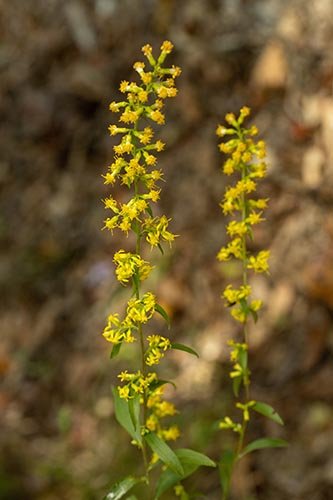History
Over a century ago the botanist and Presbyterian minister Thomas Conrad Porter collected a rather elusive plant in Jasper County, Georgia (southeast of Atlanta). Upon collecting it, T.C. Porter identified it as one species. Half a century later in 1902, his nephew, the famous botanist John Kunkel Small, author of the original Flora of the Southeastern United States, took another look at his uncle’s collected specimens. He recognized the specimen as a species new to science and named it after his esteemed uncle – Solidago porteri, or Porter’s Goldenrod. After that, T.C. Porter’s pressed plant specimens sat nestled away in the New York Botanical Garden Herbarium and were promptly lost to the annals of history. That is, until another century and change later when SGI’s Executive Director Dwayne Estes discovered a new population in south-central Tennessee nearly 250 miles from where T.C. Porter originally collected it in Georgia in 1846.
This summer, the Southeastern Grasslands Initiative will be working with several of our partners to conduct intensive, coordinated searches in Georgia to look for additional, previously unrecognized sites where Porter’s goldenrod is growing.
Current Status
In all, we currently only know of four Porter’s Goldenrod sites – one in Tennessee, two in Alabama, and one in Georgia. None of the sites are on protected land, which makes them inherently vulnerable to extirpation. This is especially true in the case of these particular sites. Three of the sites are found in residential lawns and most homeowners are not interested in letting a wild population of plants run amok and untamed in their front lawns. The fourth site is located on an active pine plantation, and pine plantations are also often unfriendly places for most plants.
Fortunately, SGI and several of our partners have been able to make believers of these landowners (I like to think we would have made Pastor Porter proud) and encouraged them to cherish these precious plants…or at least put up with them. In the case of the residential yards, the landowners have allowed us to collect seed, and in one instance has agreed to maintain the population for the time being by not mowing it. In the case of the pine plantation, they have set aside a small part as a preserve and helped manage it in a way that will allow the small population of Porter’s Goldenrod to flourish.
At this stage, we have collected seed from each of the populations. Most of the seed is stored in our Conservation Seed Bank, but a subset of it has been used to grow out and establish an ex situ living collection – an offsite collection of cultivated Porter’s Goldenrod plants that can serve as a backup to the wild populations. Currently, our partners at the State Botanical Garden of Georgia are maintaining an ex situ collection for the Georgia populations, and the Nashville Zoo is helping to establish an ex situ collection for the Tennessee population.
Could More Sites Exist?
Given that we are only aware of four Porter’s Goldenrod sites, all of which are small populations and none of which are officially protected, this species has a real risk of going extinct. However, there is one caveat to that. While we may only know of four populations, there is a possibility that more sites remain to be discovered. To that end, we are embarking on a coordinated search this summer in the vicinity of the known sites with several different partners including Georgia Department of Natural Resources, State Botanical Garden of Georgia, Lake Allatoona Army Corps of Engineers, and a biology student at Agnes Scott. With any luck, after a season of boots on the ground we’ll have some more discoveries to report!
Cooper Breeden, Plant Conservation Manager
Cooper helps conserve rare species and communities by developing conservation strategies, curating a Conservation Seed Bank that targets vulnerable populations of rare or declining grassland species, and serving as the statewide coordinator for the Tennessee Plant Conservation Alliance.


